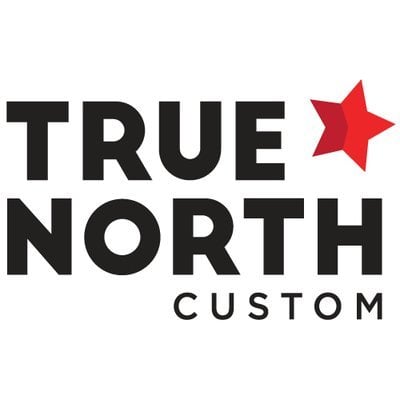
Successful campaign planning requires having the right tools and knowledge to create efficiencies, streamline production and capture the right patients with the right message. Investing time up front with a thoughtful strategy is crucial and will yield much greater results than if you’re only reacting to your market’s needs.
Cardiology, a service line that exists at nearly every healthcare facility, serves as a great example of how you can tailor and build a successful campaign to drive patient volumes and get the word out about unique procedures. At True North Custom, we use tools and data-driven reporting to plan campaigns for cardiology services, as well as many other service lines, that maximize our client’s time and financial resources while also helping patients find the resources they need to manage their health and well-being.
In general, all successful campaigns start with understanding your market—keyword research offers valuable insight into the resources and information patients in your area want. More than a launching point for search ads and paid media campaigns, keyword research tells you which questions potential patients are asking, what you can provide to help them through their care journey, and what decisions, if any, they’re ready to make.
These SEO tools offer in-depth information about search volumes, related search phrases and keyword competition for paid and organic search:
In the context of cardiology, you want to pay attention to the intent of terms and phrases. Keyphrases related to conditions and symptoms, such as “heart failure” or “heart failure symptoms.” are popular but suggest people are looking for information. Whereas search phrases for certain providers, e.g., “cardiologists near me,” can help people along a path towards seeking an appointment. Don’t ignore keywords that have low search volumes. You might be able to avoid investing time and money promoting services your patients don’t need or want. Or you may decide more awareness is needed around those services in order for your patient community to seek care. Your research will help ensure you’re moving your marketing efforts in the right direction.
In addition to providing information about search trends, keyword data allows you to determine which elements, such as online scheduling, health risk assessments or downloadable guides, to include in your campaign and which channels to utilize. Plus, you’ll be able to plan your campaign strategically and take advantage of seasonal health observances, insurance plan renewals and other variables that can influence people’s awareness of or readiness to make decisions about their health.
Transcatheter aortic valve replacement, or TAVR, campaigns serve as one specific example of how marketers can use keyword research to tailor their messaging and channel mix effectively. TAVR procedures offer high revenue potential, so when facilities have physicians who can perform them, marketers are eager to get the word out.
Using one of the tools mentioned above, you might come up with this list of keywords:
Each of these phrases suggests patients are in different stages of their care journey, from investigating symptoms to beginning the path to diagnosis to taking the final step of seeking treatment. Each stage could be targeted with a different channel:
Timing your campaign effectively is just as important as the elements you include. Using keyword tools strategically during different times of the year provides insight into seasonal trends, many of which can dictate when to publish content, swap campaign creative, or increase your search budgets.
Awareness months are a good example of this. American Heart Month is celebrated each February, as is National Wear Red Day. We know major players, such as the American Heart Association, will promote their content and resources heavily throughout the month. Rather than competing with their efforts, use them to your advantage.
Seasonality also allows you to take advantage of insurance renewals. For example, patients may have met their deductibles close to the end of the year and are thus more willing to schedule an elective procedure. At the beginning of the year, plans have renewed, and people are eligible for covered preventive visits and screenings. Planning well in advance of those insurance periods allows you to promote your services more effectively.
Planning an annual strategy doesn’t mean that your campaigns are always on. Running campaigns 365 days a year requires a big investment in both time and money. Organizations both large and small can benefit from strategic seasonal planning to ensure their potential patients see your messaging at the right time, when they need it most.
While keyword research can tell you which topics your audience is searching for, it doesn’t always give you the nuance you need to develop a robust content repository. Whether you’re creating blogs, display ads, quizzes or landing pages, your campaign may fall flat if you don’t tailor your creative to your audience.
You can even A/B test images in your campaign to see which ones resonate more with your audience throughout the year. Regularly refreshing your imagery offers the added benefit of extending the longevity of your campaign and preventing ad fatigue, which can lead to lackluster performance.
Knowing what you want to include, who you’re targeting and when to begin promoting is half the battle. Creating a roadmap of all your marketing efforts that includes planned optimizations and uniform reporting structure is the best way to ensure you can meet your objectives and easily make adjustments according to results or changes in search trends.
For example, when promoting a service line like cardiology, you may want to include multiple campaigns, such as a TAVR campaign and a general cardiology campaign. Without a comprehensive plan you risk targeting the same audience, leading to oversaturation and premature ad fatigue. Documenting your annual plan doesn’t need to be overly complicated. We recommend using a spreadsheet—Microsoft Excel, Google Sheets, Zoho and Smartsheet are all great options. By listing out each campaign by channel, CTA and creative asset, you gain an easy at-a-glance outline that allows you to implement and track the success of your campaign. You can organize your document by using color coding to note when you plan to have that campaign running or changes in targeting.
A comprehensive plan can make all the difference between a successful campaign and an exercise in frustration. Your plan can keep you on track, especially when you hit bumps in the road, and you’ll have a reference point for performance reporting. You can even recycle successful plans year after year or across other service lines more efficiently.
Thinking strategically allows you to include every element you need to run a successful campaign. Thoughtful planning gives you the ability to flight your campaign at the right time, in all the right places. And you can celebrate your wins knowing you have a clear roadmap for all the campaigns you run in the future.
 Des Davis
Des Davis
Director of Client Success
True North Custom
The original version of this page was published at: https://www.truenorthcustom.com/blog/addressing-the-what-where-when-and-how-of-successful-cardiology-campaigns
True North is your expert healthcare marketing agency, offering full-service, HIPAA-compliant marketing solutions.
The discipline of healthcare marketing continues to progress at a rapid pace. This is perhaps best illustrated by strategic plans and budgets that increasingly reflect lower (or no) ...read more
Two primary responsibilities of every healthcare marketer as they work to achieve organization key performance indicators are generating brand authority and generating new patient ...read more
The way healthcare organizations communicate with non-consumer audiences is critical to brand and revenue performance. Here’s how you can engage physicians, employers and other ...read more
Before investing time and resources in revamping your digital presence, consider these hospital website best practices to ensure an engaging user experience and deliver return on your ...read more